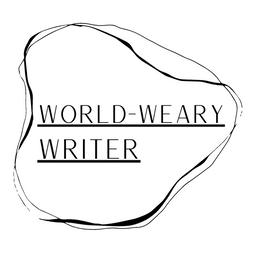Using Art to Inspire Social Change

Humans are emotional creatures.
We base all of our choices on how we feel whether we realize it or not. That's simply the way our brains are structured; we choose based on our emotions, and then we justify the choice afterwards.
That's why generations of propagandists and advertising experts have spent years honing the craft of punching us right in the feels. Emotions drive our actions even when we think we're being logical and objective.
Ask any trial lawyer worth their salt, and they'll tell you that telling a compelling story is a huge part of how they work a case. Charisma and impact matter, and the jury is an audience. Evidence matters, of course, but a lawyer that can't capture the jury's imagination is going to have a hard time.
The same is true for politicians. Politics is all about being convincing and compelling, and activism really isn't any different. If you can make yourself connect with a cause, to feel passionately for it, you'll fight tooth and nail for it.
Activists understand that; it's how most of us get into the gig in the first place. Harnessing that understanding and using it as a tool can make all the difference.
I don't mean that you should deceitfully manipulate people's feelings or anything, that's not cool. But if you want to encourage somebody to get involved in the cause you're promoting, enrapturing them with a story that tugs at their heartstrings is a great way to do it.
That's why art is often foundational to protest movements.

When I went to art college, we devoted an entire semester and an elective to talking about the use of art to push for social change.
Art can be any form of creative self-expression. It's a means of communication, whether that be through sound, performance, or visual mediums. The goal is to make your audience feel.
Pairing art with social commentary has been a staple of our work since time immemorial.
Propaganda posters. Protest songs, poems, or novels about revolution. Graffiti, going back to Ancient Rome. Minstrels in Medieval Europe. Artists have been spies, propagandists and activists for centuries.
In my how-to guide for activists, I talk a little bit more about different methods of getting involved in social causes. I mention the importance of spreading the message and making it memorable so that it sticks in the minds of your observers.

In the same way that a spectacular painting stays with you long after you've stopped looking at it, activist artwork can be the difference between sparking a fire and the cold ash of indifference.
It goes beyond static works of art, too. The entertainment industry runs on social commentary.
I often see people lamenting that they wish movies, games, books and other media would keep politics out of entertainment. They long for the bygone days of yore when stories were just for fun, and there was no agenda thrust into center stage.
I hate to disappoint those people, but that time has never existed.
Art can be there just for fun, sure. But that's the exception rather than the norm, and it's always been that way. It's always been about expression, about creating something that stirs the heart and mind.
For protest to be effective, people need to be invested in the cause. It needs to feel important; it needs to appeal to our sense of right and wrong.
When I wrote about the Selma March, I discussed how important it was for the march to be televised. Getting the story of what happened, actual video footage of the violence, and putting it out in front of the masses...that was a game changer.
It went beyond simple reporting and let the viewers see the violence for themselves. They weren't just hearing about it second hand, it was right there, before their eyes. Watching innocent people be beaten and driven back, through the eyes of the camera operator. That changed everything.

Simply giving people the facts of a situation is not enough.
Think about it- why do we tell children fables? Why do we couch lessons in stories and fairy tales? It's because the process of sharing a narrative and infusing it with detail and an empathetic protagonist fixes the image in their brains.
Making it an emotional tale has more impact than simply reciting a list of trivia off a bullet point list. Emotion is inspirational. It's more memorable, and more effective.
A well-made piece of art can achieve the same thing. Even if you can't march in a street protest or take part in direct action, creating and sharing works of art can be a fantastic way to join the fight.
Solidarity wins.







Member discussion